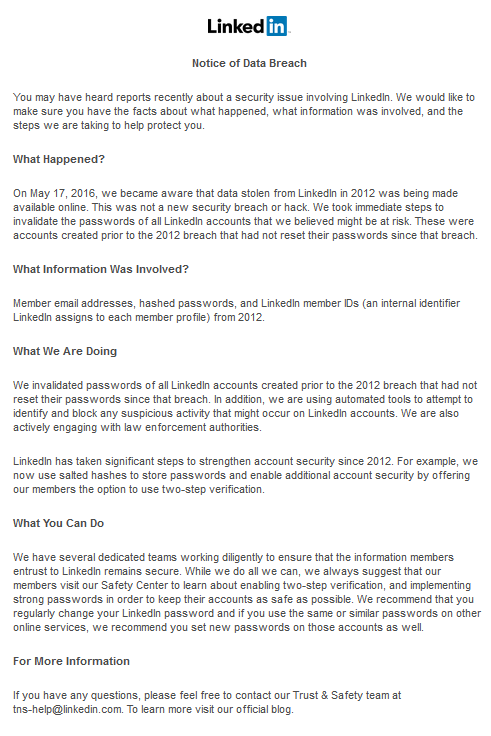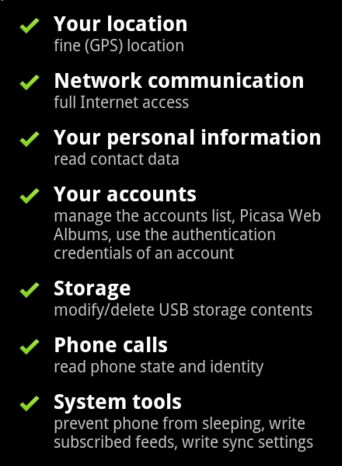Yeah, they’ve been hacked 4 years ago and now their data is everywhere … well, almost everywhere.
The LinkedIn hack of 2012 is now being sold on the dark web. It was allegedly 167 million accounts and for a mere 5 bitcoins (about US$2.2k) you could jump over to the Tor-based trading site, pay your Bitcoins and retrieve what is one of the largest data breaches ever to hit the airwaves. Until this week, when Myspace.com leak from 2013 (or 2008!) released data of over 360Mil users.
LinkedIn’s Legal wrote :
|
| Notice of Data Breach |
| You may have heard reports recently about a security issue involving LinkedIn. We would like to make sure you have the facts about what happened, what information was involved, and the steps we are taking to help protect you. |
| What Happened? |
| On May 17, 2016, we became aware that data stolen from LinkedIn in 2012 was being made available online. This was not a new security breach or hack. We took immediate steps to invalidate the passwords of all LinkedIn accounts that we believed might be at risk. These were accounts created prior to the 2012 breach that had not reset their passwords since that breach. |
| What Information Was Involved? |
| Member email addresses, hashed passwords, and LinkedIn member IDs (an internal identifier LinkedIn assigns to each member profile) from 2012. |
| What We Are Doing |
| We invalidated passwords of all LinkedIn accounts created prior to the 2012 breach that had not reset their passwords since that breach. In addition, we are using automated tools to attempt to identify and block any suspicious activity that might occur on LinkedIn accounts. We are also actively engaging with law enforcement authorities. |
| LinkedIn has taken significant steps to strengthen account security since 2012. For example, we now use salted hashes to store passwords and enable additional account security by offering our members the option to use two-step verification. |
| What You Can Do |
| We have several dedicated teams working diligently to ensure that the information members entrust to LinkedIn remains secure. While we do all we can, we always suggest that our members visit our Safety Center to learn about enabling two-step verification, and implementing strong passwords in order to keep their accounts as safe as possible. We recommend that you regularly change your LinkedIn password and if you use the same or similar passwords on other online services, we recommend you set new passwords on those accounts as well. |
| For More Information |
| If you have any questions, please feel free to contact our Trust & Safety team at tns-help@linkedin.com. To learn more visit our official blog. |
|
Well… I don’t care… I have Two-Factor-Authentication enabled. Nobody can hack me this way!
Btw, LinkedIn calls this Two Step Verification.
But, if you didn’t change your password lately and you don’t have two factor authentication enabled, you may actually want to change the password and activate the two step verification.
© Copyright 2016
Sorin Mustaca, All rights Reserved. Written For:
Sorin Mustaca on Cybersecurity
Check
www.endpoint-cybersecurity.com for seeing the consulting services we offer.
Visit
www.itsecuritynews.info for latest security news in English
Besuchen Sie
de.itsecuritynews.info für IT Sicherheits News auf Deutsch
Like this:
Like Loading...
Related


